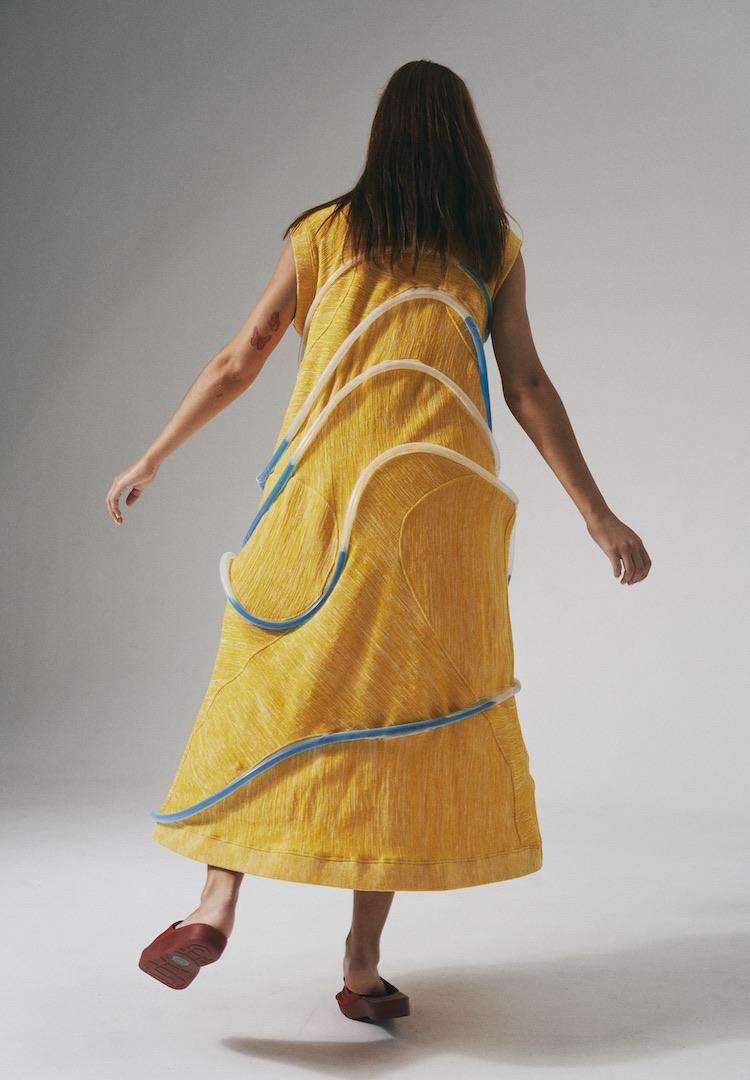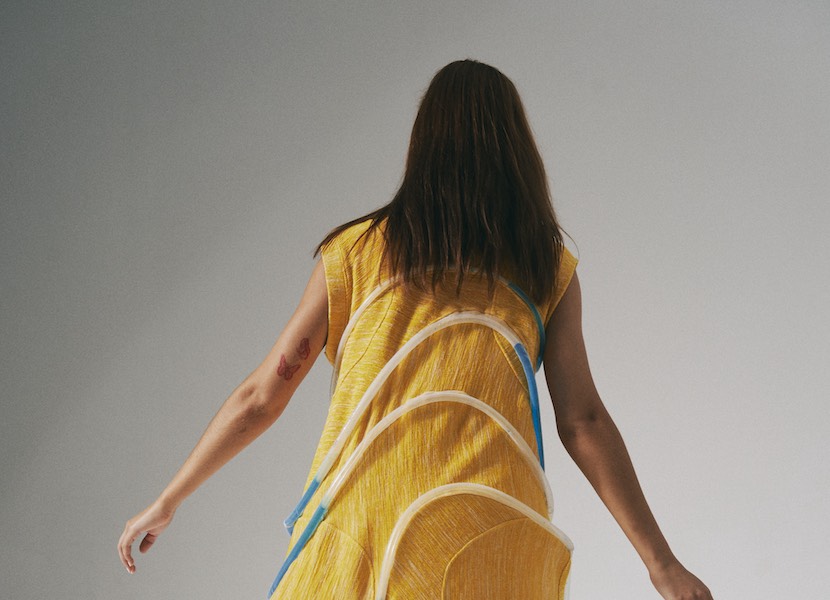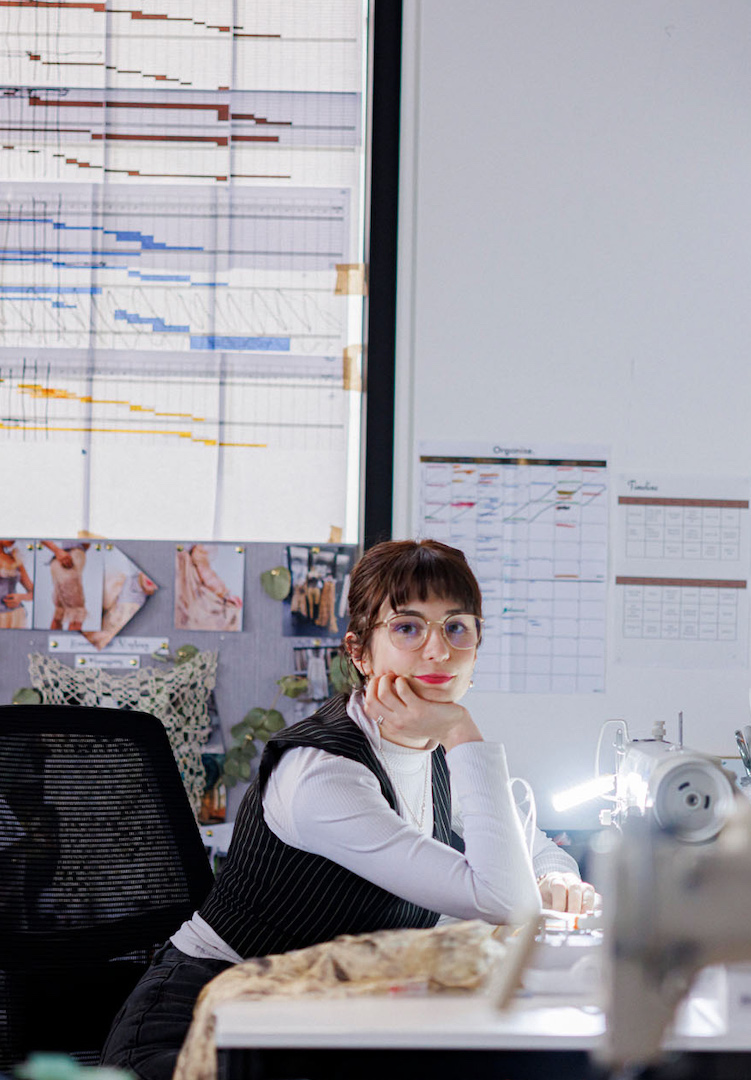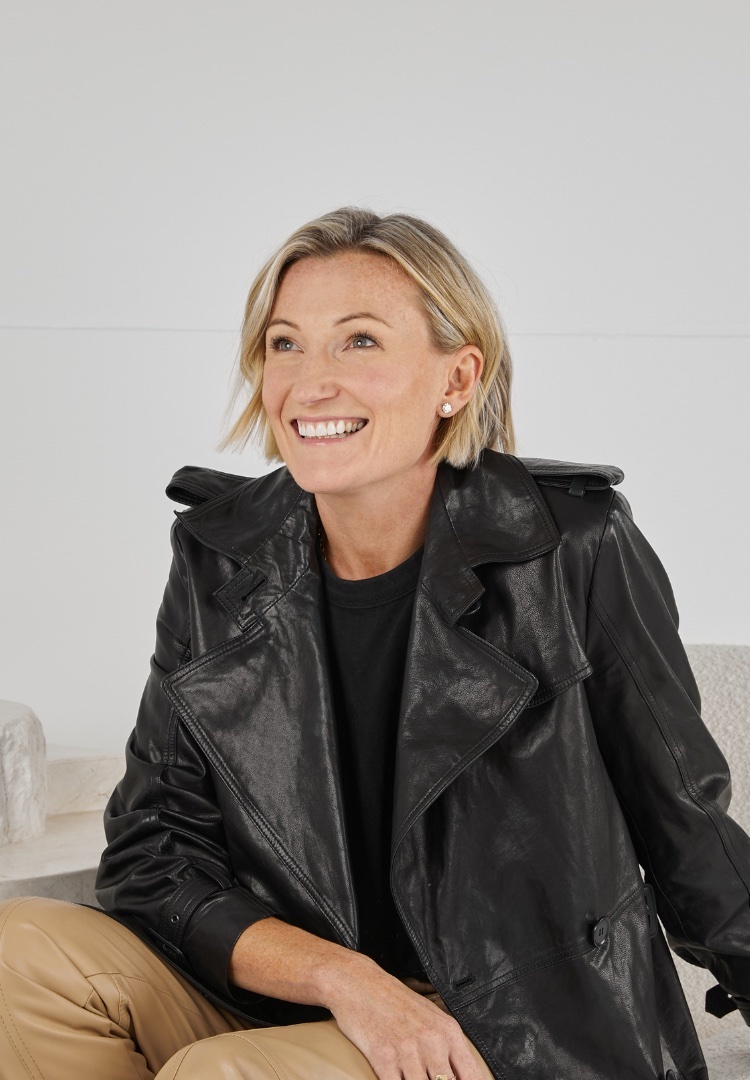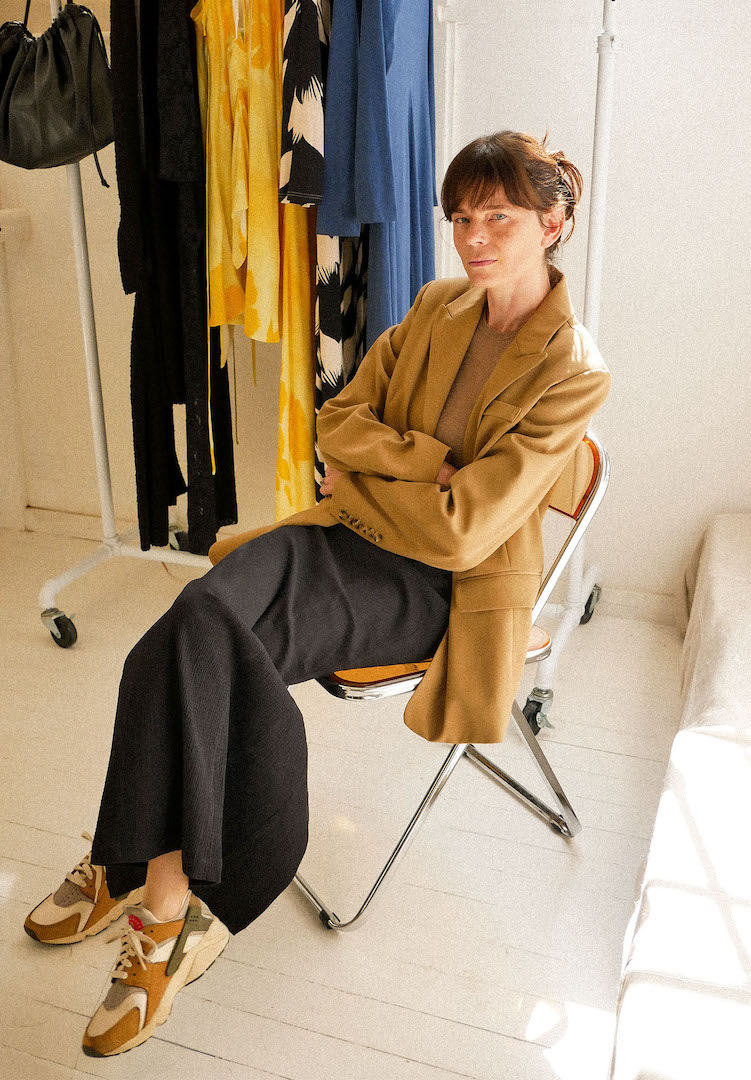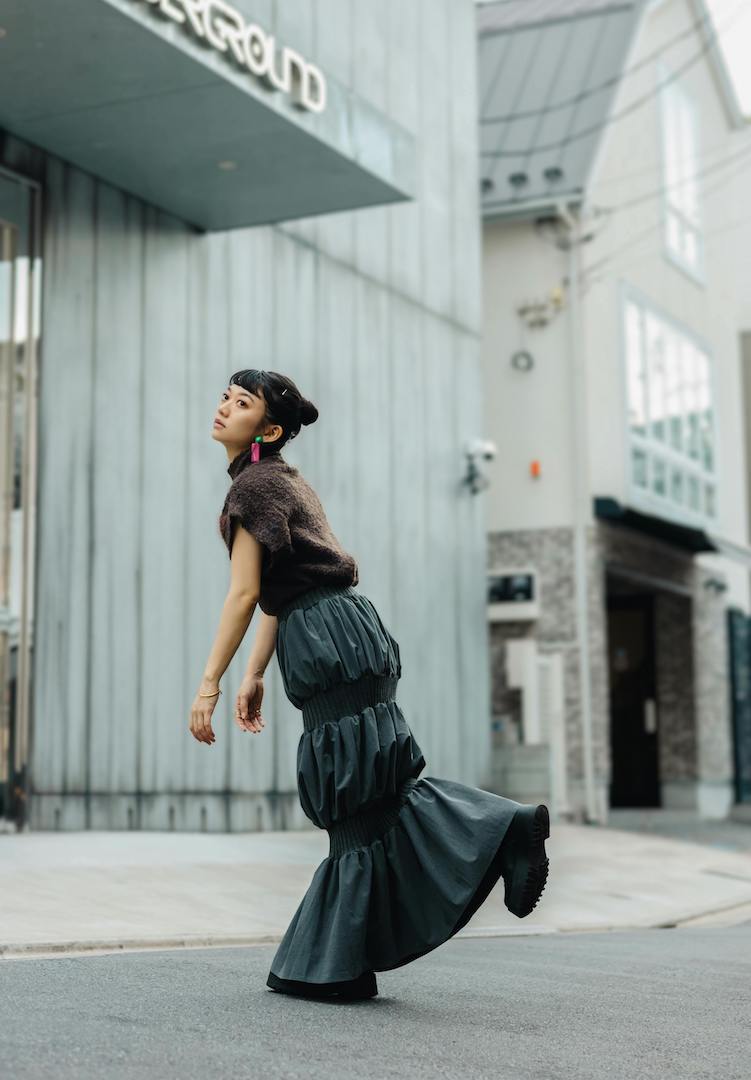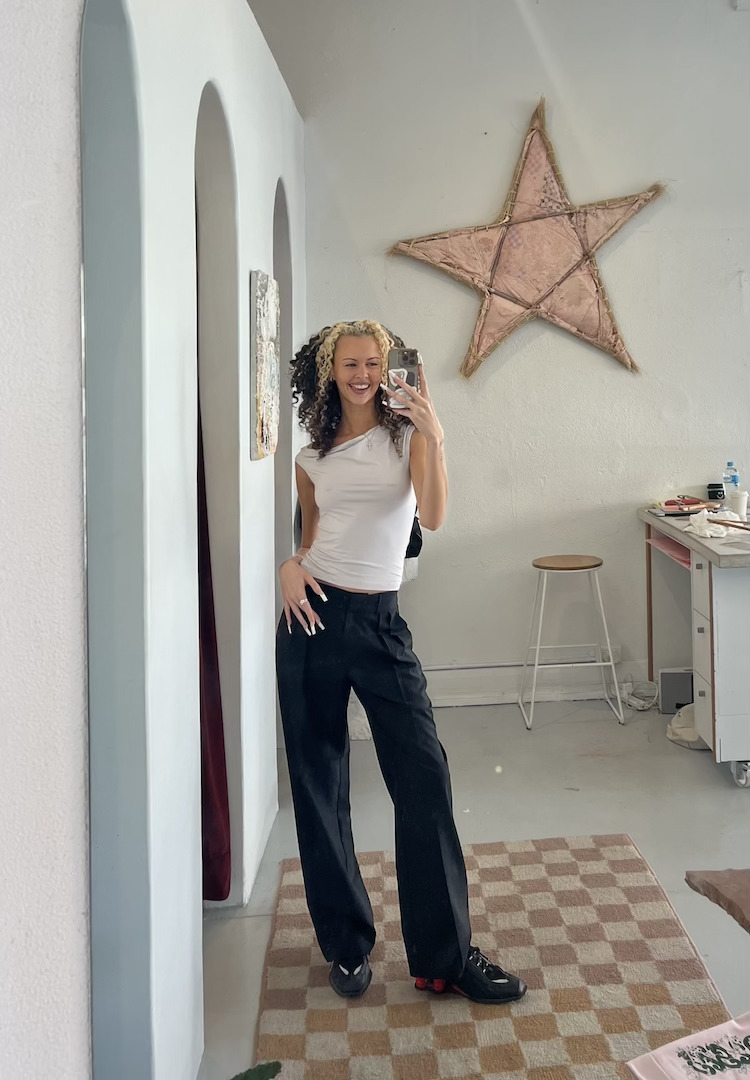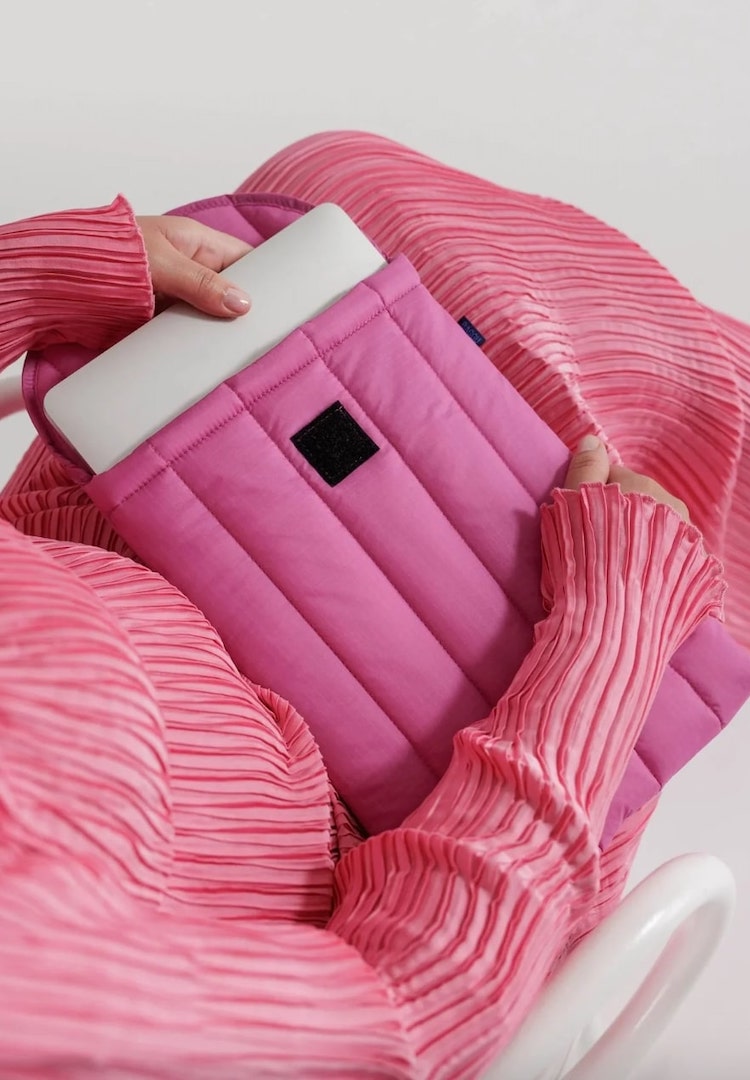Emerging Sydney designer Lina Yu is creating knitwear that’s playful and sensorial
Photographer – ALEX LV
Models – MADDIE COLLIER, JAMES DEILEY AND LILY MARK
WORDS – ELLY SHINKFIELD
“With a focus on compression, stretch, movement, sound, comfort and playfulness, the collection is an immersive, sensory experience.”
As an official media partner of PayPal Melbourne Fashion Festival, Fashion Journal is excited to once again be supporting the National Graduate Showcase x Emporium Melbourne, celebrating Australia’s top-ranked emerging fashion design talent. The top 10 leading graduates from across the country will exhibit their collections in a boundary-pushing presentation, showcasing experimental design and innovation.
Looking for more fashion news and features? Head to our Fashion section.
Over the next few weeks, we’ll be profiling each designer through a series of interviews. Next up is Lina Yu. An honours graduate of the University of Technology Sydney, her graduate collection Museum Objects fuses hand-knitted fabrications with non-traditional materials to create an immersive, sensory fashion experience. Below, she tells us about her collection.
Please introduce yourself to our readers.
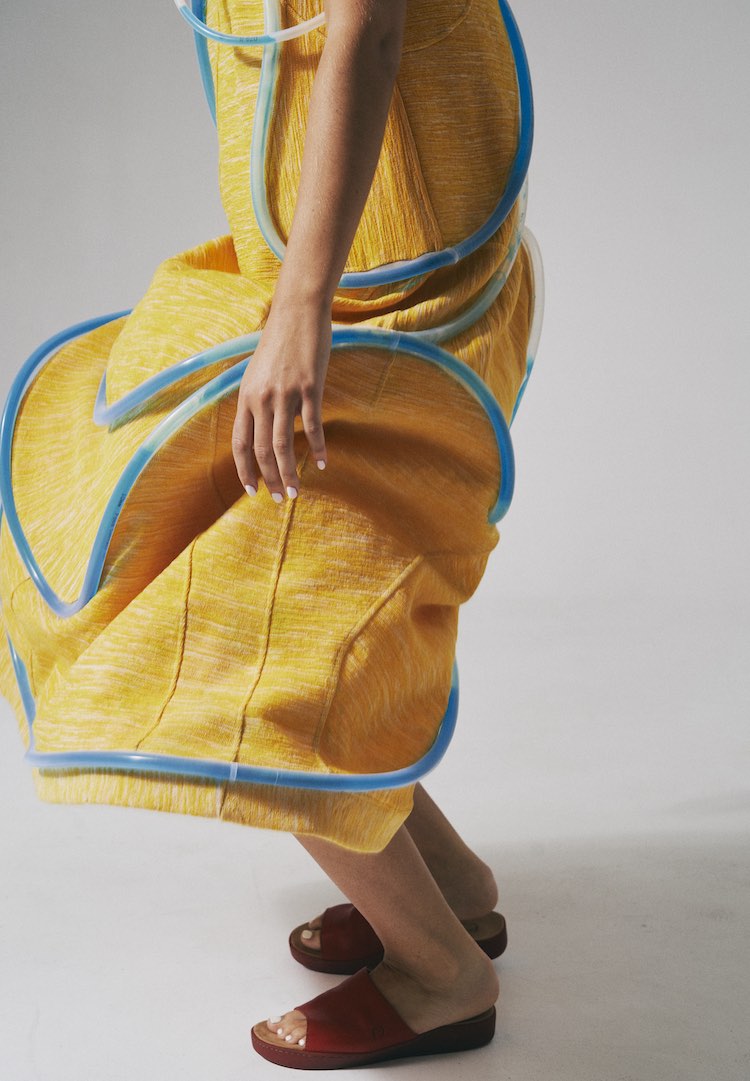
My name is Lina Yu and I am an emerging designer and University of Technology Sydney honours graduate in fashion and textiles.
Tell us about your collection.
The title of my collection is Museum Objects. It is a dissolution of museum apathy in fashion exhibition spaces. Often when we are viewing fashion exhibitions in the museum, we kind of just walk through admiring (or not) the fabrications, the construction details on lifeless mannequins or get sucked into the commercialised grand event of a famous designer’s collection being displayed in a way that makes the clothes a cold museum object.
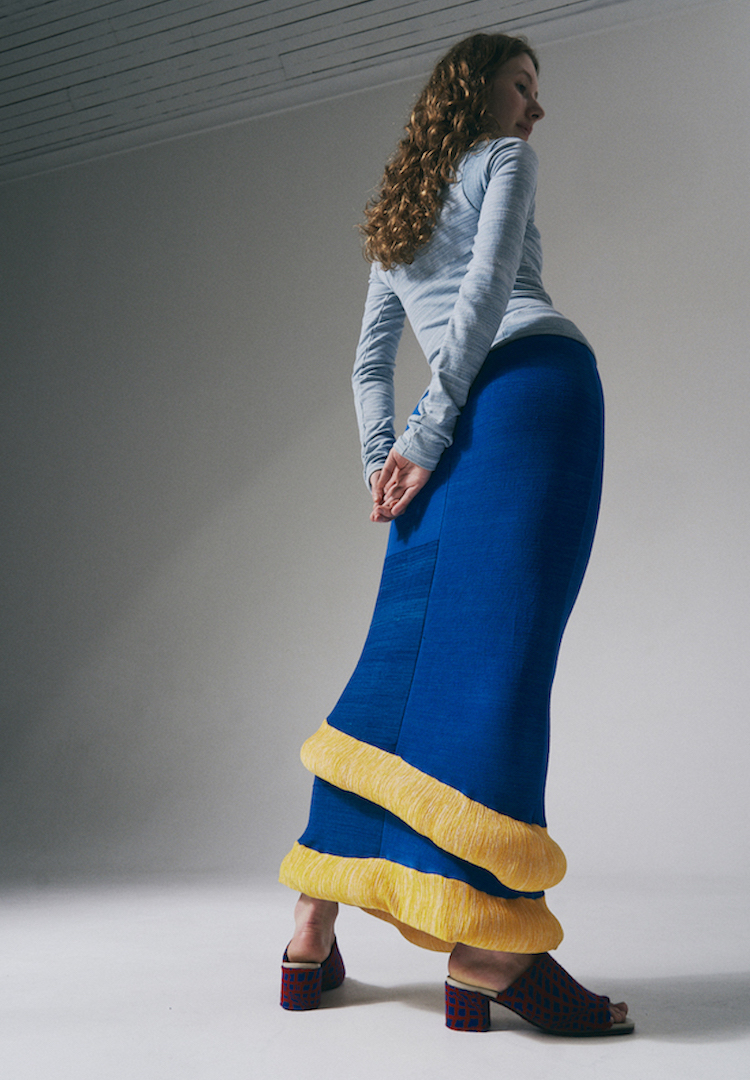
Therefore, in my collection, I playfully intersect fashion and haptics, integrating unexpected, non-fashion materials into wearable fashion objects to challenge this dissociative [experience] in museum spaces. The collection merges water, condoms and beanbags with technical knitwear fabrications to invite wearers and viewers to interact with these fashion artefacts in novel and immersive ways.
With a focus on compression, stretch, movement, sound, comfort and playfulness, the collection is an immersive, sensory experience. Through a highly digital material language, this collection transcends the traditional boundaries of fashion exhibitions, offering a dynamic and participatory encounter with fashion artefacts to spark a redefinition of the viewer’s role. Acts of stretching, shifting weight and compression initiate an active dialogue between the garments and the wearer.
When did you know you wanted to get into fashion and textile design?
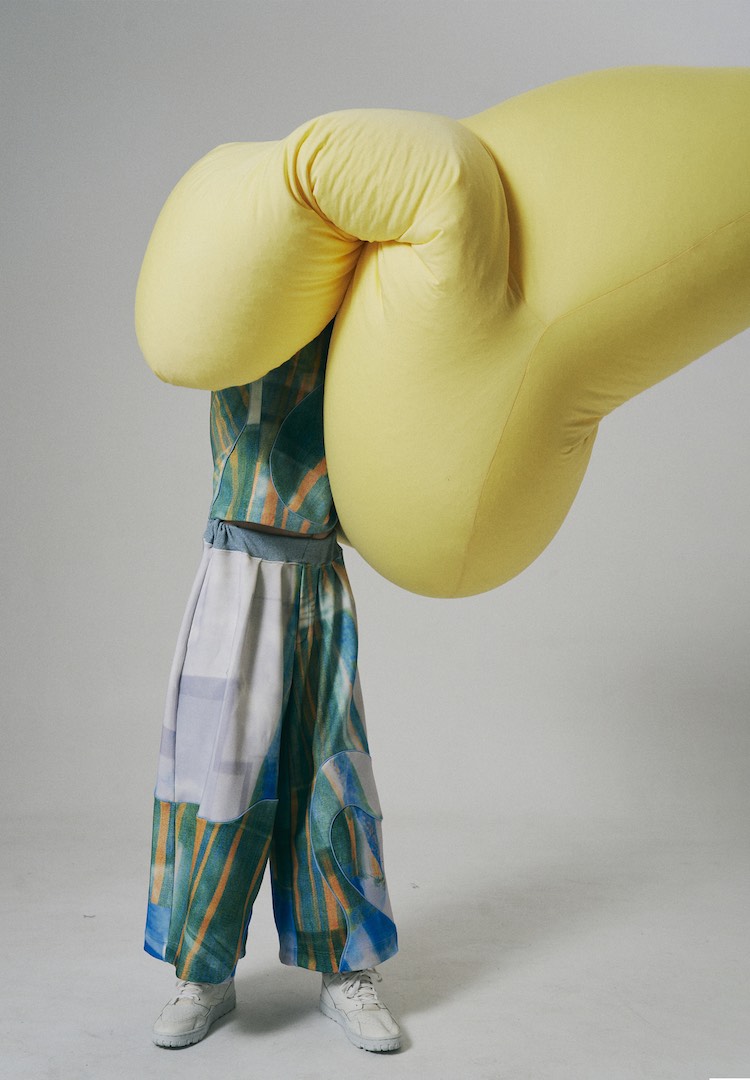
Fashion and textiles have always been around me growing up. My grandma was a sewist, and my mum studied costume design, worked in bridal and always made me clothes throughout my childhood. So I have always been inclined towards garment making and design. I didn’t really think that I would choose it as a career path though.
I was definitely going down the academic path throughout school, but what really pushed me to commit and study fashion and textiles was after a bleak year studying medical science after high school. I knew I didn’t want to keep going down that route so I decided, why not pursue something that I actually enjoy? It was a scary decision but so far it feels like the right one.
What were the major points of inspiration for your collection, and you more broadly as a designer? Tell us about the experience of putting together your graduate collection.
My research for my collection started with looking at historic fashion exhibitions and the evolution of museum curation. I also drew a lot of artistic references from performance artists and sensory design/art. I think that is quite obvious when seeing that I have beanbags and tubes of water in my pieces.
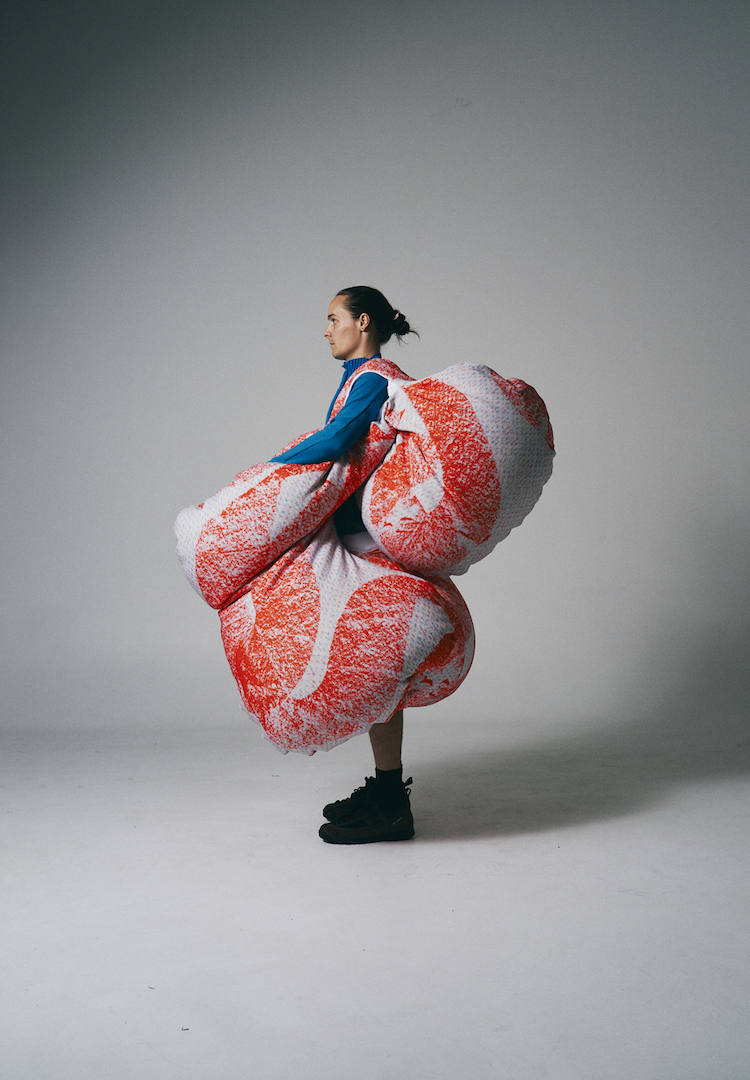
But as a result, there is an aspect of playfulness that I always try to bring into my work. Sensory design is also an important part of my collection and broader work as a designer. I believe that it gives value and meaning to what I create. After all, clothing is to be worn and experienced, not just to be looked at.
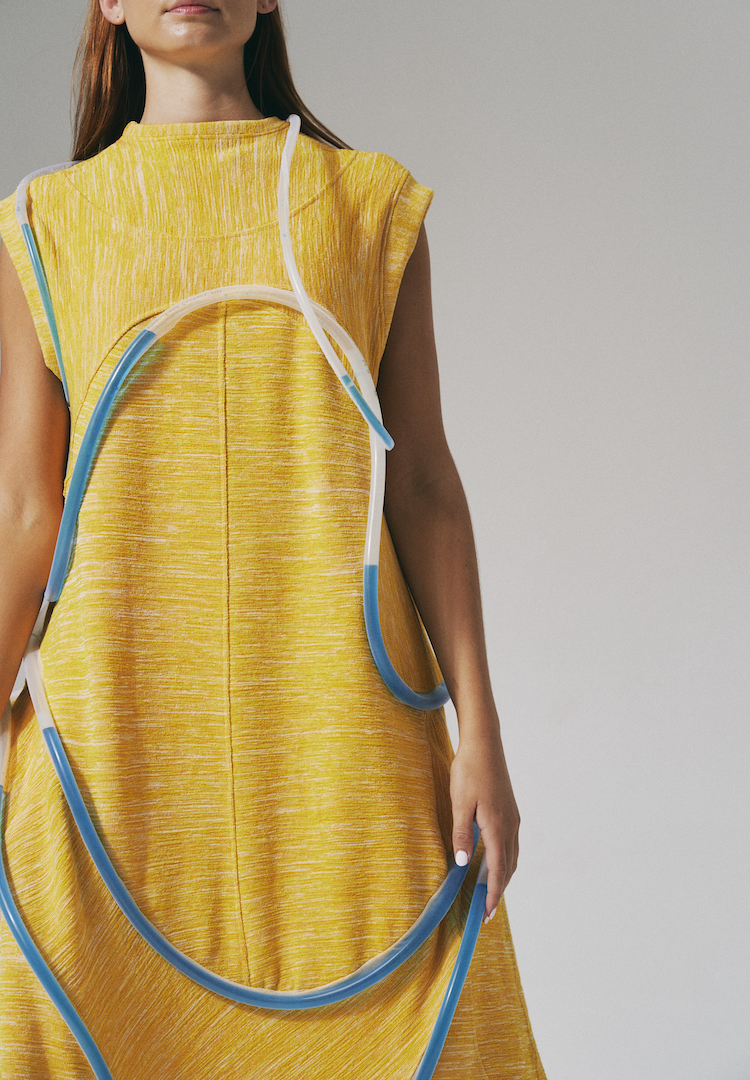
My entire collection is made out of knit fabric. I confess that I only learned how to machine knit at the start of last year when I was first conceptualising my collection and ended up falling down that rabbit hole. I started experimenting with the mechanics of knit. The stretchiness, the compression, the experience of it on the body and the surface textures that are possible with knit fabrication.
I would spend 12 hours a day knitting meters and meters of fabric and then cutting and sewing the pattern back together. It was a big, big task (blood, sweat and tears being a very appropriate cliche here) but it meant that I was creating my own unique fabric with intentional colours and technical properties.
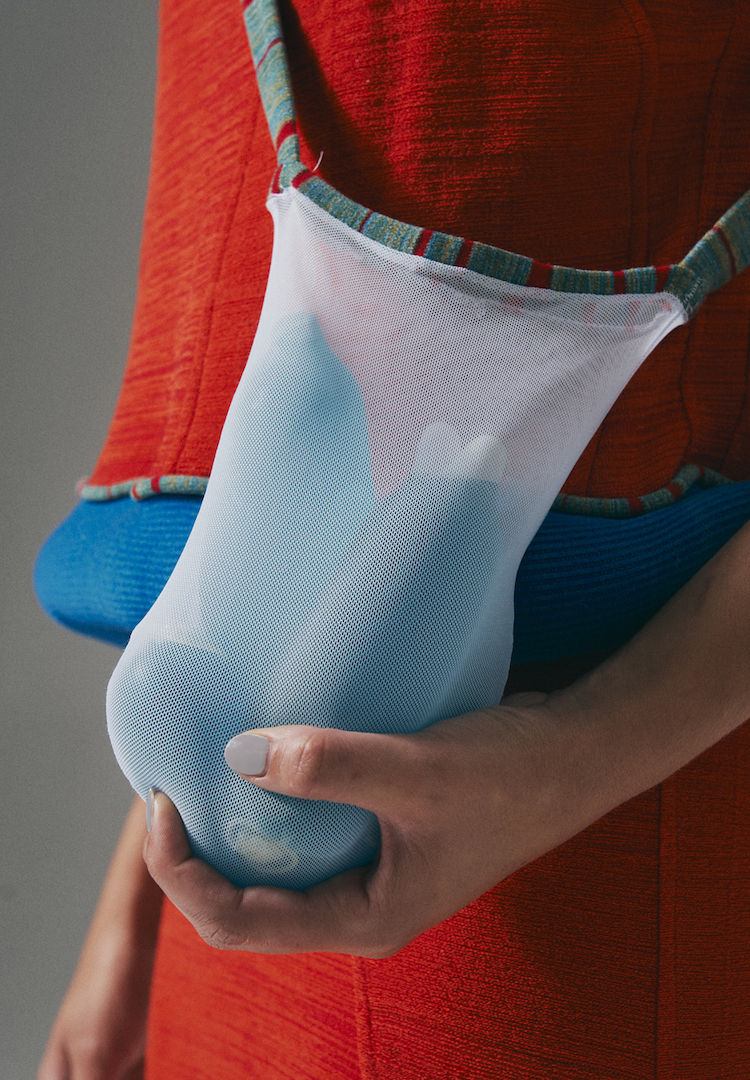
I was lucky enough to receive a sponsorship with Calcoup Knitwear so I developed a digital artwork and then those guys knitted it into an amazing jacquard knit fabric. There is some digital print work in my collection and these designs were developed with a very back-and-forth conversation between hands-on processes and scanning them and manipulating them in the computer.
What part does sustainability play in your design practice? And other ethical considerations?

Knitting my own fabric meant that I was eliminating a lot of waste by calculating meterage and patternmaking based on the confines of the knit machines at uni. It means that I am choosing where the yarn is from, what processes are necessary to create the fabric, and making only how much I need.
Who do you think is most exciting in Australian fashion right now?
Jordan Dalah is a very exciting Australian designer. His exaggerated silhouettes and strong vision have a very exciting presence in the Australian fashion landscape.
What about the Australian fashion industry needs to change?
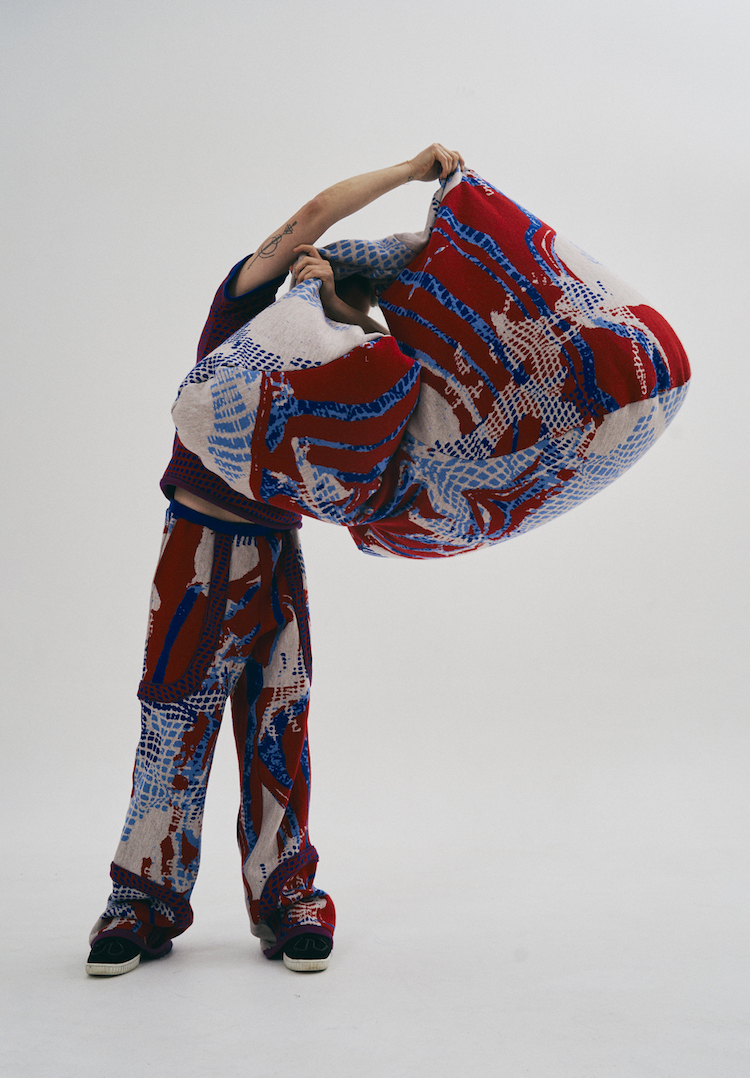
I would love for people to invest more in one of one, thoughtfully designed and slow-made fashion. It is easy for people to jump onto the next trending style or aesthetic and brands will pump out 1000 units of the next ‘timeless wardrobe staple’.
I think it’s important for people to invest in long-lasting and well-made fashion and this is a reciprocal relationship where brands should be transparent with the production processes and traceability of materials. I would love to see emerging, slow-fashion designers not just gain a fleeting spotlight, but be a major part of the Australian fashion industry.
To view more of Lina’s work, head here. You can get your tickets to PayPal Melbourne Fashion Festival’s National Graduate Showcase x Emporium Melbourne here.


